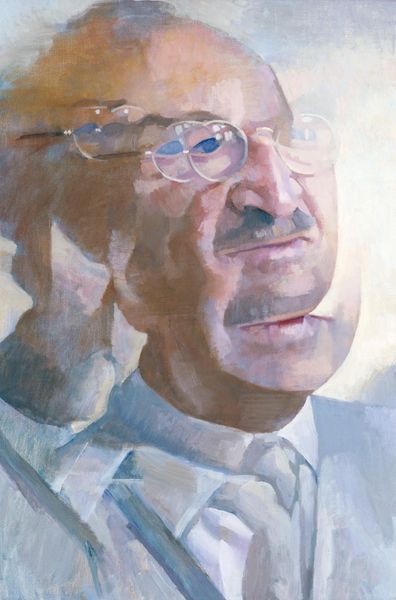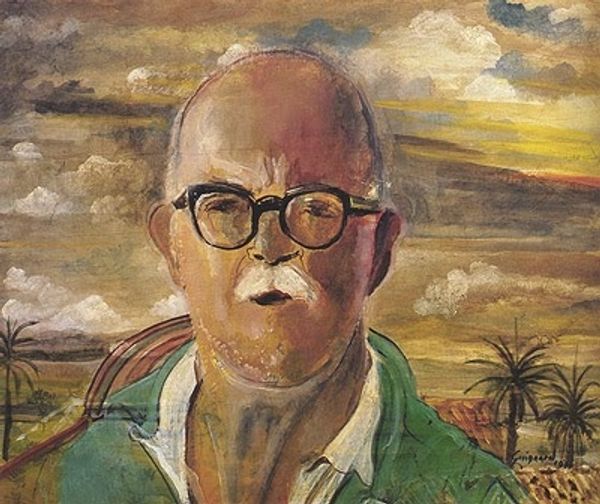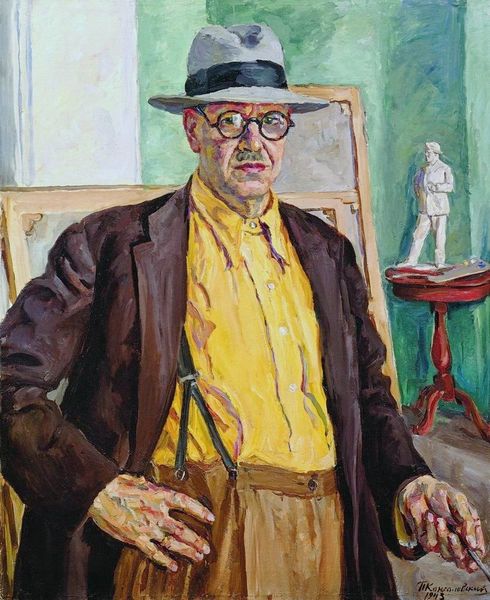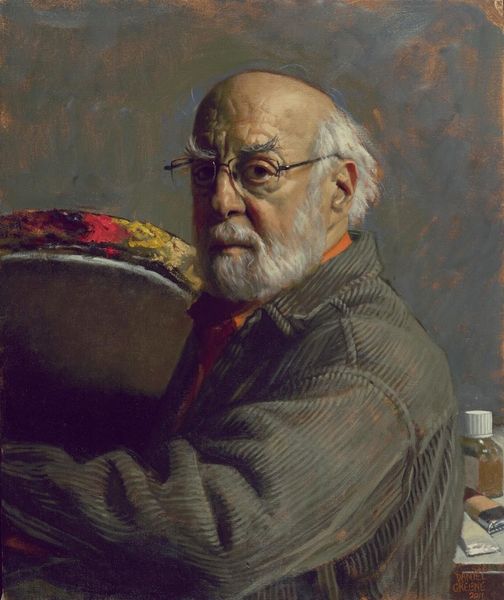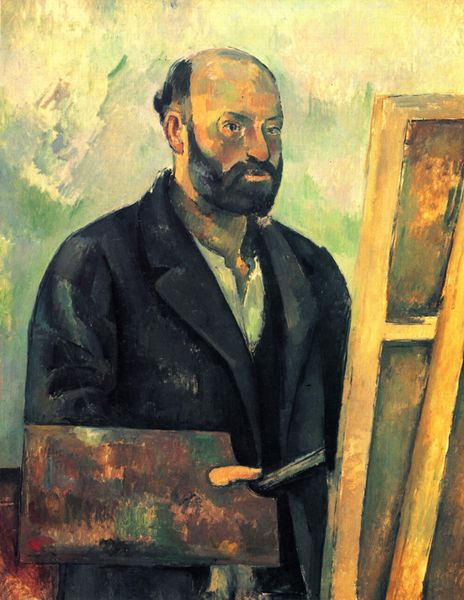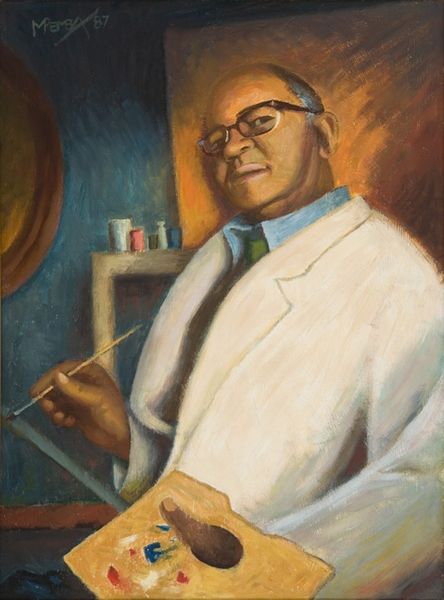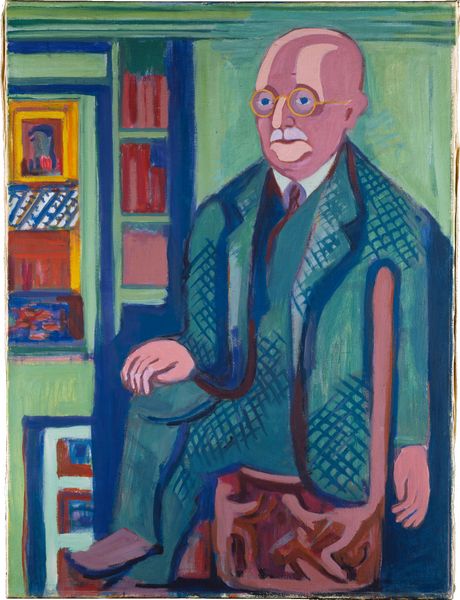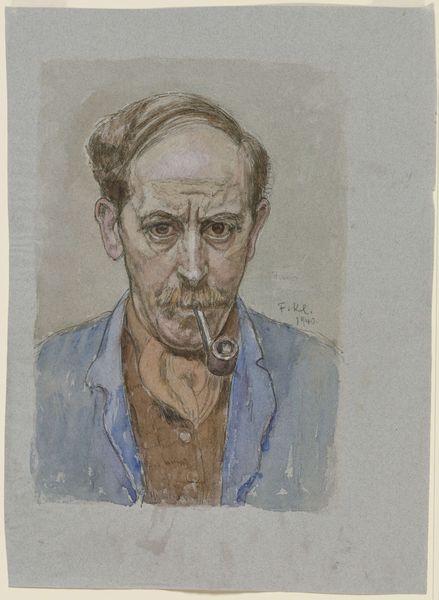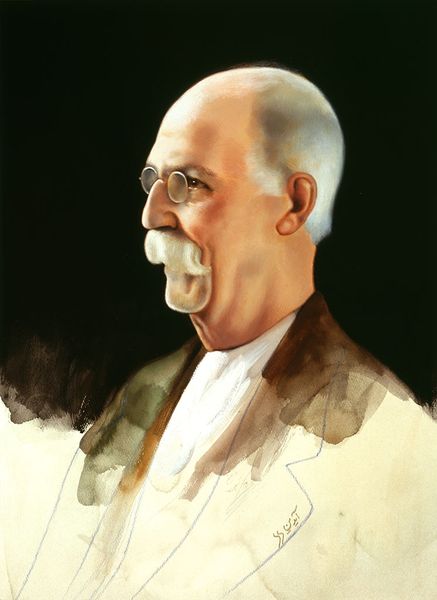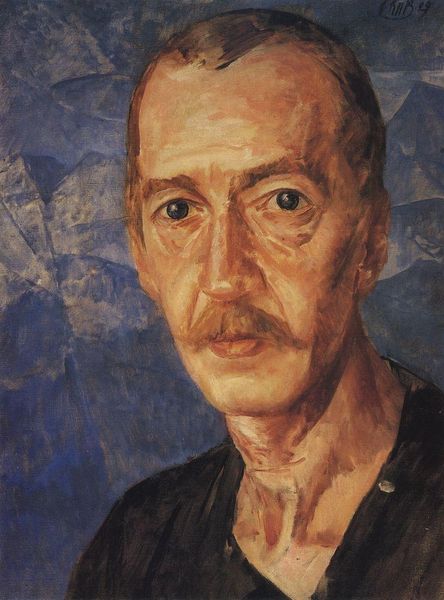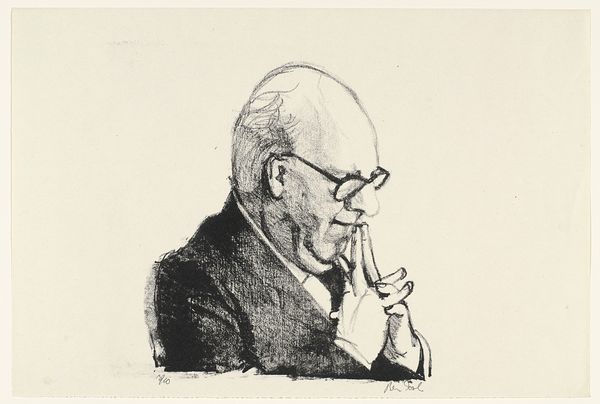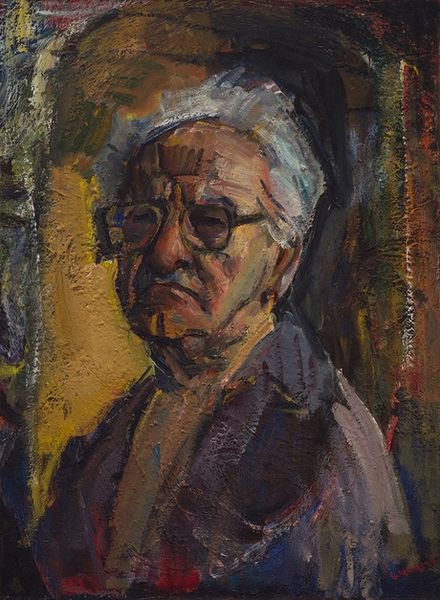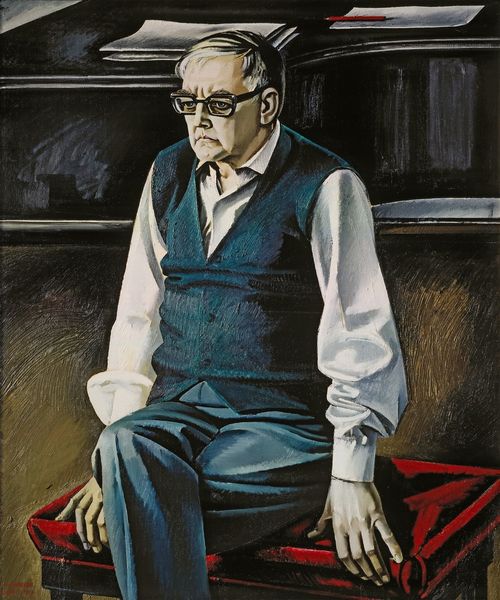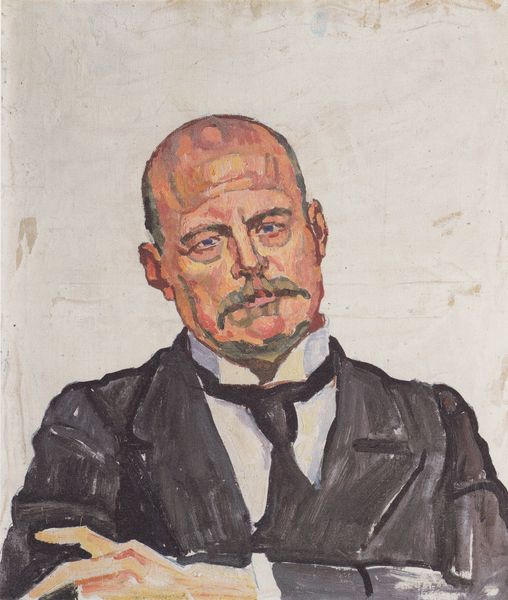
painting, oil-paint
#
portrait
#
self-portrait
#
painting
#
oil-paint
#
oil painting
Copyright: Alberto da Veiga Guignard,Fair Use
Curator: Standing before us is "Auto Retrato," a self-portrait by Alberto da Veiga Guignard, painted in 1952 using oil. What strikes you first about it? Editor: There's a gentle weariness to it. A thoughtful calm, muted tones... almost sepia, like looking at an old photograph. He seems comfortable, but…observant. It lacks grandiosity, wouldn't you say? Curator: Precisely. There's an endearing intimacy, wouldn’t you agree? Guignard often infused his work with a quiet sensibility; he wasn't chasing shock value. Editor: I think there’s strength in showing a softness of character. How does the context affect that, you know? Curator: That's an astute point. During this period in Brazil, figurative art was battling with modern abstraction; in my view, Guignard didn't fully succumb to either; he retains realism whilst hinting at something deeper. His muted palette, while appearing soft, can be read as resistance. Editor: Like holding space when others are making noise? Curator: Exactly! And, in this “selfie”, he’s deliberately presenting himself with glasses that simultaneously mask and enhance perception and he makes eye contact, like he’s really seeing us… challenging us to *really* see him. Editor: What a brave and vulnerable stance when portraiture was mostly seen as status symbol! The quiet rebellion here is moving. Seeing this kind of self-representation allows others to breathe. Curator: Yes, a soft and considered reflection amidst art and life! It’s a potent reminder that there's an unspoken political dimension when we choose our mode of self-portrayal. Editor: Absolutely. Thanks to Guignard for this glimpse. He offers such quiet affirmation through art, for us all! Curator: Indeed, it makes one consider what self-portraits, if any, we’d dare paint ourselves today. Thank you for those thought provoking insights!
Comments
No comments
Be the first to comment and join the conversation on the ultimate creative platform.
